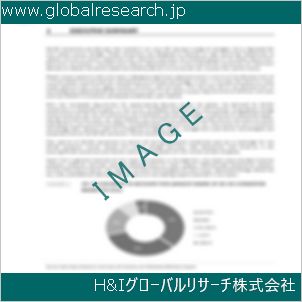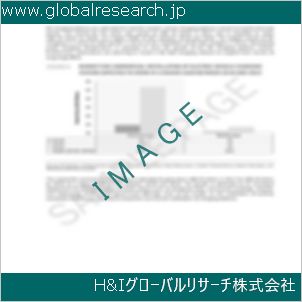Table of Contents
1 Industry Overview of Aluminumfluoride
1.1 Definition and Specifications of Aluminumfluoride
1.1.1 Definition of Aluminumfluoride
1.1.2 Specifications of Aluminumfluoride
1.2 Classification of Aluminumfluoride
1.3 Applications of Aluminumfluoride
1.3.1 Nuclear Application
1.3.2 Non-Nuclear Application
1.4 Industry Chain Structure of Aluminumfluoride
1.5 Industry Overview and Major Regions Status of Aluminumfluoride
1.5.1 Industry Overview of Aluminumfluoride
1.5.2 Global Major Regions Status of Aluminumfluoride
1.6 Industry Policy Analysis of Aluminumfluoride
1.7 Industry News Analysis of Aluminumfluoride
2 Manufacturing Cost Structure Analysis of Aluminumfluoride
2.1 Raw Material Suppliers and Price Analysis of Aluminumfluoride
2.2 Equipment Suppliers and Price Analysis of Aluminumfluoride
2.3 Labor Cost Analysis of Aluminumfluoride
2.4 Other Costs Analysis of Aluminumfluoride
2.5 Manufacturing Cost Structure Analysis of Aluminumfluoride
2.6 Manufacturing Process Analysis of Aluminumfluoride
3 Technical Data and Manufacturing Plants Analysis of Aluminumfluoride
3.1 Capacity and Commercial Production Date of Global Aluminumfluoride Major Manufacturers in 2023
3.2 Manufacturing Plants Distribution of Global Aluminumfluoride Major Manufacturers in 2023
3.3 R&D Status and Technology Source of Global Aluminumfluoride Major Manufacturers in 2023
3.4 Raw Materials Sources Analysis of Global Aluminumfluoride Major Manufacturers in 2023
4 Capacity, Production and Revenue Analysis of Aluminumfluoride by Regions, Types and Manufacturers
4.1 Global Capacity, Production and Revenue of Aluminumfluoride by Regions 2019-2024
4.2 Global and Major Regions Capacity, Production, Revenue and Growth Rate of Aluminumfluoride 2019-2024
4.3 Global Capacity, Production and Revenue of Aluminumfluoride by Types 2019-2024
4.4 Global Capacity, Production and Revenue of Aluminumfluoride by Manufacturers 2019-2024
5 Price, Cost, Gross and Gross Margin Analysis of Aluminumfluoride by Regions, Types and Manufacturers
5.1 Price, Cost, Gross and Gross Margin Analysis of Aluminumfluoride by Regions 2019-2024
5.2 Price, Cost, Gross and Gross Margin Analysis of Aluminumfluoride by Types 2019-2024
5.3 Price, Cost, Gross and Gross Margin Analysis of Aluminumfluoride by Manufacturers 2019-2024
6 Consumption Volume, Consumption Value and Sale Price Analysis of Aluminumfluoride by Regions, Types and Applications
6.1 Global Consumption Volume and Consumption Value of Aluminumfluoride by Regions 2019-2024
6.2 Global and Major Regions Consumption Volume, Consumption Value and Growth Rate of Aluminumfluoride 2019-2024
6.3 Global Consumption Volume and Consumption Value of Aluminumfluoride by Types 2019-2024
6.4 Global Consumption Volume and Consumption Value of Aluminumfluoride by Applications 2019-2024
6.5 Sale Price of Aluminumfluoride by Regions 2019-2024
6.6 Sale Price of Aluminumfluoride by Types 2019-2024
6.7 Sale Price of Aluminumfluoride by Applications 2019-2024
6.8 Market Share Analysis of Aluminumfluoride by Different Sale Price Levels
7 Supply, Import, Export and Consumption Analysis of Aluminumfluoride
7.1 Supply, Consumption and Gap of Aluminumfluoride 2019-2024
7.2 Global Capacity, Production, Price, Cost, Revenue, Supply, Import, Export and Consumption of Aluminumfluoride 2019-2024
7.3 USA Capacity, Production, Price, Cost, Revenue, Supply, Import, Export and Consumption of Aluminumfluoride 2019-2024
7.4 EU Capacity, Production, Price, Cost, Revenue, Supply, Import, Export and Consumption of Aluminumfluoride 2019-2024
7.5 China Capacity, Production, Price, Cost, Revenue, Supply, Import, Export and Consumption of Aluminumfluoride 2019-2024
7.6 Japan Capacity, Production, Price, Cost, Revenue, Supply, Import, Export and Consumption of Aluminumfluoride 2019-2024
8 Major Manufacturers Analysis of Aluminumfluoride
8.1 Manufacturer One
8.1.1 Company Profile
8.1.2 Product Picture and Specifications
8.1.2.1 Type I
8.1.2.2 Type II
8.1.2.3 Type III
8.1.3 Capacity, Production, Price, Cost, Gross and Revenue
8.1.4 Contact Information
8.2 Manufacturer Two
8.2.1 Company Profile
8.2.2 Product Picture and Specifications
8.2.2.1 Type I
8.2.2.2 Type II
8.2.2.3 Type III
8.2.3 Capacity, Production, Price, Cost, Gross and Revenue
8.2.4 Contact Information
8.3 Manufacturer Three
8.3.1 Company Profile
8.3.2 Product Picture and Specifications
8.3.2.1 Type I
8.3.2.2 Type II
8.3.2.3 Type III
8.3.3 Capacity, Production, Price, Cost, Gross and Revenue
8.3.4 Contact Information
8.4 Manufacturer Four
8.4.1 Company Profile
8.4.2 Product Picture and Specifications
8.4.2.1 Type I
8.4.2.2 Type II
8.4.2.3 Type III
8.4.3 Capacity, Production, Price, Cost, Gross and Revenue
8.4.4 Contact Information
8.5 Manufacturer Five
8.5.1 Company Profile
8.5.2 Product Picture and Specifications
8.5.2.1 Type I
8.5.2.2 Type II
8.5.2.3 Type III
8.5.3 Capacity, Production, Price, Cost, Gross and Revenue
8.5.4 Contact Information
…
9 Marketing Trader or Distributor Analysis of Aluminumfluoride
9.1 Marketing Channels Status of Aluminumfluoride
9.2 Traders or Distributors with Contact Information of Aluminumfluoride by Regions
9.3 Ex-work Price, Channel Price and End Buyer Price Analysis of Aluminumfluoride
9.4 Regional Import, Export and Trade Analysis of Aluminumfluoride
10 Industry Chain Analysis of Aluminumfluoride
10.1 Upstream Major Raw Materials Suppliers Analysis of Aluminumfluoride
10.1.1 Major Raw Materials Suppliers with Contact Information Analysis of Aluminumfluoride
10.1.2 Major Raw Materials Suppliers with Supply Volume Analysis of Aluminumfluoride by Regions
10.2 Upstream Major Equipment Suppliers Analysis of Aluminumfluoride
10.2.1 Major Equipment Suppliers with Contact Information Analysis of Aluminumfluoride
10.2.2 Major Equipment Suppliers with Product Pictures Analysis of Aluminumfluoride by Regions
10.3 Downstream Major Consumers Analysis of Aluminumfluoride
10.3.1 Major Consumers with Contact Information Analysis of Aluminumfluoride
10.3.2 Major Consumers with Consumption Volume Analysis of Aluminumfluoride by Regions
10.4 Supply Chain Relationship Analysis of Aluminumfluoride
11 Development Trend of Analysis of Aluminumfluoride
11.1 Capacity, Production and Revenue Forecast of Aluminumfluoride by Regions and Types
11.1.1 Global Capacity, Production and Revenue of Aluminumfluoride by Regions 2024-2029
11.1.2 Global and Major Regions Capacity, Production, Revenue and Growth Rate of Aluminumfluoride 2024-2029
11.1.3 Global Capacity, Production and Revenue of Aluminumfluoride by Types 2024-2029
11.2 Consumption Volume and Consumption Value Forecast of Aluminumfluoride by Regions, Types and Applications
11.2.1 Global Consumption Volume and Consumption Value of Aluminumfluoride by Regions 2024-2029
11.2.2 Global and Major Regions Consumption Volume, Consumption Value and Growth Rate of Aluminumfluoride 2024-2029
11.2.3 Global Consumption Volume and Consumption Value of Aluminumfluoride by Types 2024-2029
11.2.4 Global Consumption Volume and Consumption Value of Aluminumfluoride by Applications 2024-2029
11.3 Supply, Import, Export and Consumption Forecast of Aluminumfluoride
11.3.1 Supply, Consumption and Gap of Aluminumfluoride 2024-2029
11.3.2 Global Capacity, Production, Price, Cost, Revenue, Supply, Import, Export and Consumption of Aluminumfluoride 2024-2029
11.3.3 USA Capacity, Production, Price, Cost, Revenue, Supply, Import, Export and Consumption of Aluminumfluoride 2024-2029
11.3.4 EU Capacity, Production, Price, Cost, Revenue, Supply, Import, Export and Consumption of Aluminumfluoride 2024-2029
11.3.5 China Capacity, Production, Price, Cost, Revenue, Supply, Import, Export and Consumption of Aluminumfluoride 2024-2029
11.3.6 Japan Capacity, Production, Price, Cost, Revenue, Supply, Import, Export and Consumption of Aluminumfluoride 2024-2029
12 New Project Investment Feasibility Analysis of Aluminumfluoride
12.1 New Project SWOT Analysis of Aluminumfluoride
12.2 New Project Investment Feasibility Analysis of Aluminumfluoride
13 Conclusion of the Global Aluminumfluoride (CAS 7784-18-1) Industry 2024 Market Research Report
| ※参考情報 フッ化アルミニウム(Aluminum fluoride、CAS 7784-18-1)は、アルミニウムのフッ化物であり、その化学式はAlF₃です。無色または白色の結晶性固体であり、一般的に水に対しては不溶ですが、強酸や強アルカリには溶解します。フッ化アルミニウムは、特にアルミニウム製造や特殊セラミックス、ガラス、冶金などさまざまな産業で利用されています。 フッ化アルミニウムの特徴として、まずその独特な結晶構造が挙げられます。フッ化アルミニウムは、NaCl型の結晶構造を持ち、立方体の形をしています。この特徴により、化学反応において優れた触媒として機能することができます。また、高い熱安定性を持ち、高温下でも性質が変わることが少ないという特性があります。この特性は、フッ化アルミニウムを高温での用途に適した材料としています。 フッ化アルミニウムにはいくつかの種類があります。主に、合成フッ化アルミニウムと天然フッ化アルミニウムの2つに分類されます。合成フッ化アルミニウムは、工業的に製造されるものであり、主にフッ素化反応を通じて得られます。一方、天然フッ化アルミニウムは、鉱物から直接採掘されるものです。これらのタイプは、化学的性質や用途において微妙な違いがありますが、一般的には同じように使用されます。 フッ化アルミニウムの主な用途は、アルミニウム精錬におけるフラックス材としての利用です。アルミニウムの製造過程で、フッ化アルミニウムはアルミナと共に使用され、電気分解の効率を高める役割を果たしています。この過程で、フッ化アルミニウムが含まれる電解質が使用され、これによりアルミニウムの融点が下がり、電流効率が向上します。また、フッ化アルミニウムは、アルミニウム製造に伴う副生成物の管理や環境負荷の軽減にも寄与しています。 さらに、フッ化アルミニウムは特殊なガラス材料やセラミックスの製造にも利用されます。フッ化アルミニウムを添加することで、ガラスの透明性や強度を向上させることが可能となります。また、セラミック製品においても、焼成温度を下げる効果があり、製品の質を高めるために使用されることがあります。このような特性から、エレクトロニクスや光学デバイスなどの高性能材料としての利用が進んでいます。 関連技術としては、フッ化アルミニウムを利用した新たな材料の開発が挙げられます。例えば、フッ化アルミニウムの特性を生かしたナノ材料の研究が進行中です。ナノスケールでの材料設計は、従来の材料に比べて優れた特性を持つことが多く、今後の応用が期待されています。また、フッ化アルミニウムは、電子デバイスの絶縁材料や熱伝導材料としても研究されており、その応用の広がりが注目されています。 環境面では、フッ化アルミニウムはその特徴からリサイクルにも利用されます。アルミニウム製造における副産物としてのフッ化アルミニウムは、適切に処理、リサイクルされることにより、資源の有効活用が進んでいます。また、フッ化アルミニウムを利用することで、アルミニウム製品のライフサイクルを延ばし、廃棄物の減少にも貢献しています。 ただし、フッ化アルミニウムには取り扱いに注意が必要な点もあります。フッ素化合物は毒性があり、環境や人体に対する影響が懸念されています。フッ化アルミニウムを扱う際には、適切な安全対策が求められます。例えば、適切な防護具を着用し、換気の良い場所で作業を行うことが重要です。 総じて、フッ化アルミニウムはその特性から多岐にわたる分野で利用されており、今後も新たな応用が期待されています。持続可能な材料としての可能性も秘めており、環境負荷軽減に寄与する技術の一端を担うことが期待されています。アルミニウム製造や特殊材料の開発において、フッ化アルミニウムは欠かせない存在であり、今後の研究や技術革新により、その重要性はさらに増していくことでしょう。 |
❖ 免責事項 ❖
http://www.globalresearch.jp/disclaimer












